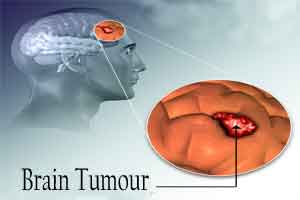- Home
- Editorial
- News
- Practice Guidelines
- Anesthesiology Guidelines
- Cancer Guidelines
- Cardiac Sciences Guidelines
- Critical Care Guidelines
- Dentistry Guidelines
- Dermatology Guidelines
- Diabetes and Endo Guidelines
- Diagnostics Guidelines
- ENT Guidelines
- Featured Practice Guidelines
- Gastroenterology Guidelines
- Geriatrics Guidelines
- Medicine Guidelines
- Nephrology Guidelines
- Neurosciences Guidelines
- Obs and Gynae Guidelines
- Ophthalmology Guidelines
- Orthopaedics Guidelines
- Paediatrics Guidelines
- Psychiatry Guidelines
- Pulmonology Guidelines
- Radiology Guidelines
- Surgery Guidelines
- Urology Guidelines
Brain tumor cured using Neuro-navigation at Artemis Hospital

New Delhi : A 35-year-old having a large brain tumour, that caused speech impediment, was cured using a special medical technique at a city hospital here, doctors said.
Rahul, an epileptic, started suffering from headaches and often experienced hampering of speech. Though on several visits to hospitals, a brain tumour was clearly diagnosed, the doctors only gave him the option of open skull surgery, which Rahul did not want to undergo.
Later, he was referred to city-based Artemis Hospital known for its advanced Neuro-medical techniques.
On visiting Artemis, Rahul was told about 'Neuro-navigation' technique which could be performed through a small incision. Doctors said the tumour was large, 6 cm in diameter, and was causing progressive problems.
"The patient had a 6 to 7 cm-diameter tumour on the left side of the skull that interrupted his speech. We decided to make use of the 'Neuro-navigation technology' that acts like GPS navigation inside the brain to reach the tumour accurately. There was no need to shave the head and only a small incision was needed directly over the tumour," said Aditya Gupta, Director of Neurosurgery at Artemis Hospital.
He said that post-surgical disfigurement was also avoided.
"Further, functional MRI-based definition of the speech area allowed doctors to take special care to preserve this area to avoid speech problems after surgery," said Gupta.
According to hospital authorities, after the tumour was removed, the patient recovered quickly. He was fully conscious and talking to his family the same day.
Rahul was discharged after two days of the operation and now leads a normal lifestyle.
Elaborating on the technology, Gupta said: "This technology is similar to the GPS. Once the MRI information is fed into a special work-station, the system works on recognising the external landmarks such as the nose and the brow from both the MRI images as well as the actual patient in the operating room and matches the two sets of data."
"Reference pointers and optical detectors then work on the GPS triangulation principle to enable the surgeon to see exactly where he is working at a particular point in time by using a pointer. This helps the surgeons to make the exact cut, eliminating the need to completely shave the head, as well as keeps them spatially oriented during surgery. This is known as Neuro-navigation," he added.
"Neuro-navigation has become an omnipresent tool in the surgical management of brain tumours. Using this technology during procedures like tumour re-sections, surgeons can navigate more precisely, perform less-invasive procedures and help improve clinical outcomes," Gupta said.
Next Story
NO DATA FOUND

Disclaimer: This site is primarily intended for healthcare professionals. Any content/information on this website does not replace the advice of medical and/or health professionals and should not be construed as medical/diagnostic advice/endorsement or prescription. Use of this site is subject to our terms of use, privacy policy, advertisement policy. © 2020 Minerva Medical Treatment Pvt Ltd